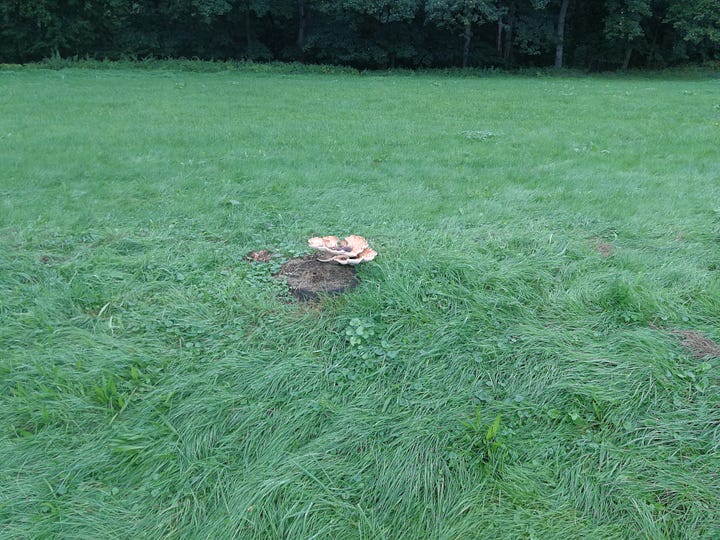Section Hike: E10, Kap Arkona → Stralsund, Day Three
Hiking along the Baltic Coast on the Island of Rügen
This day ended up having the worst weather of the trip, raining from early in the morning until evening with only short breaks in between. I ended up not taking very many pictures or shooting any usable video as a result, but I did manage to capture this really beautiful sunset when I finally reached my camp for the night, on a farm just outside of the nature reserve surrounding the town of Putbus on the east coast of the island. Getting there, however, was a challenge. My route is here.
Once I crossed the embankment from Jasmund to the main island of Muttland I was in forest again, with the Bodden (the term in the local dialect, descended from Low German, for a large bay with a narrow inlet from the sea, a characteristic feature of the islands and lagoons of the southern Baltic Sea) still occasionally visible through the trees to my right.


Place-Names
I’m going to keep talking about the place-names that I come across, because I’m fascinated by the mixture of different histories they preserve. While Bodden is closely related to the standard German Boden (for “ground” or “floor”), the open bays around the island are frequently called Wiek, a word descending from the Old Norse vik (for “bay”) that you also find in English place-names like Warwick or Keswick. The Slavic empire that existed here from the seventh to the twelfth century, the connection to other Baltic kingdoms through the Hanseatic League, the Scandinavian hegemony that lasted for several centuries, the relatively late Christianization, and finally the incorporation into the German states, all left their marks on the island; and remnants of all of these can be found not just in the various ruins, holy sites, and still-standing castles, but in the place-names still in use.
My old guidebook for the E-Paths describes the route of the E10 as reaching the eastern coast of Jasmund, where it ran through the Jasmund Nature Preserve and the island’s most characteristic feature, the chalk cliffs near the town of Straßnitz (also the entry point for the Jakobsweg pilgrimage route that I mentioned previously, via ferries arriving from farther up the Baltic Sea). I regret that I didn’t get to see this part of the island, so perhaps when I return I’ll take a detour of a couple days to visit them.
Rügen was a frequent subject of German Romantic paintings, and I suspect it’s due not just to the characteristically irregular weather and the unique light conditions that result, but also due to the exotic, primitive mystique that still lingers on the island like a fine lustre.
Back to Hiking
The approach to Bergen auf Rügen passes through a forest with an adventure park featuring a toboggan run, an open-air stage, and an observation tower, and then the town itself featuring a lovely historic center with a church—and the information center for tourism on the main island, which was where I got most of my advice for planning my overnights, situated in a charming mediæval building on the town square—but then I pass through a series of DDR-era housing blocks, an urban-garden space, and then onto a long forest road toward Putbus.

Eventually, after clambering my way through the forest, I reached one of the fields belonging to the farmer where I’d be staying for the night. It turned out that he had a small camper trailer set up at the far end of his property, near some open space that had clearly been intended as a small campground in previous years (I found a wooden platform with a rope spanned between the trees at eye-level above it, buried in the undergrowth: it had all the look of an outdoor shower).
He said that he had one or two hikers come through every year, mostly pilgrims making their way along the Jakobsweg toward Santiago de Compostela in Spain. He very kindly gave me a bucket of fresh water for cooking and washing, and said I could sleep in the trailer if I needed.
That wasn’t necessary, but I was definitely grateful for it for the afternoon: the last rainstorm of the day came through while I was cooking dinner, and having a solid shelter to cook and eat and rest a while was something I very much needed after two long days of hiking.
Tomorrow will be a much easier hike. Only eleven kilometers to the next campsite (in a fruit orchard), so I can spend a long afternoon relaxing and drying off my gear in the sun.




